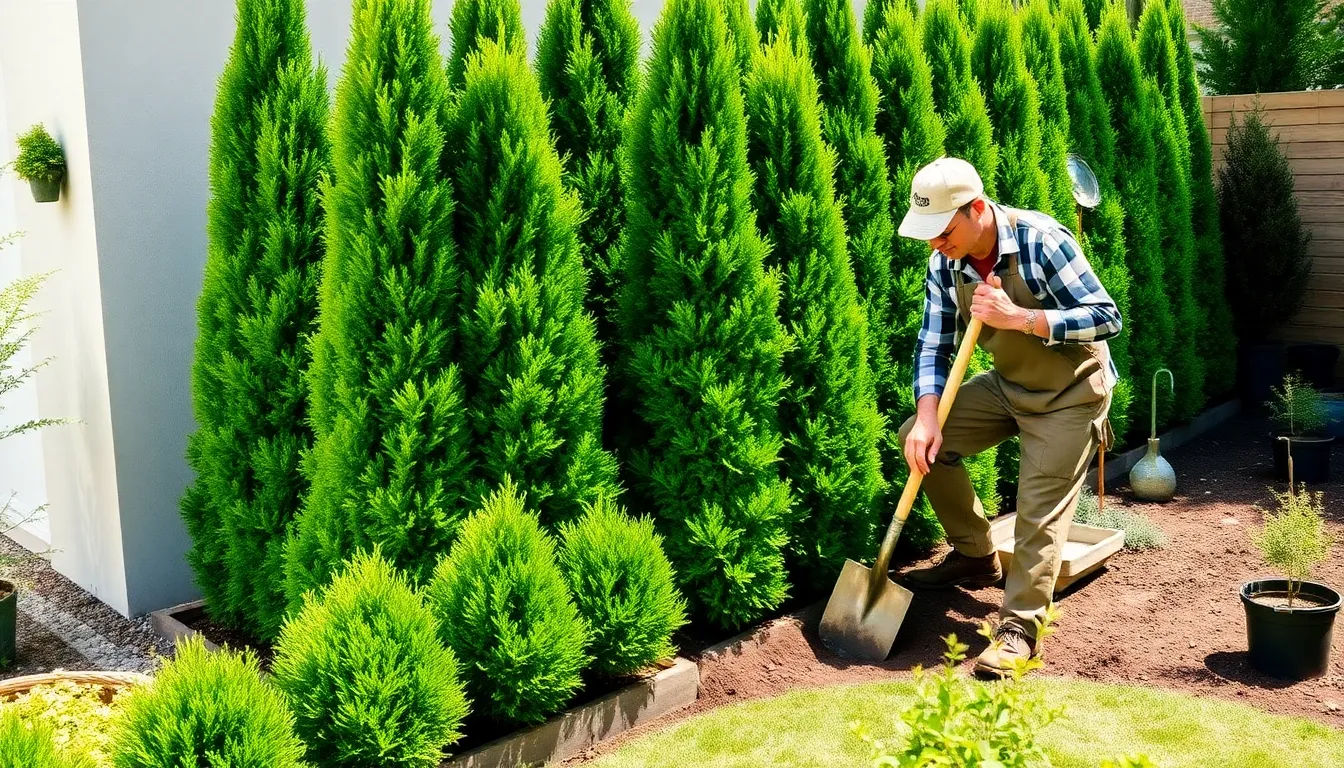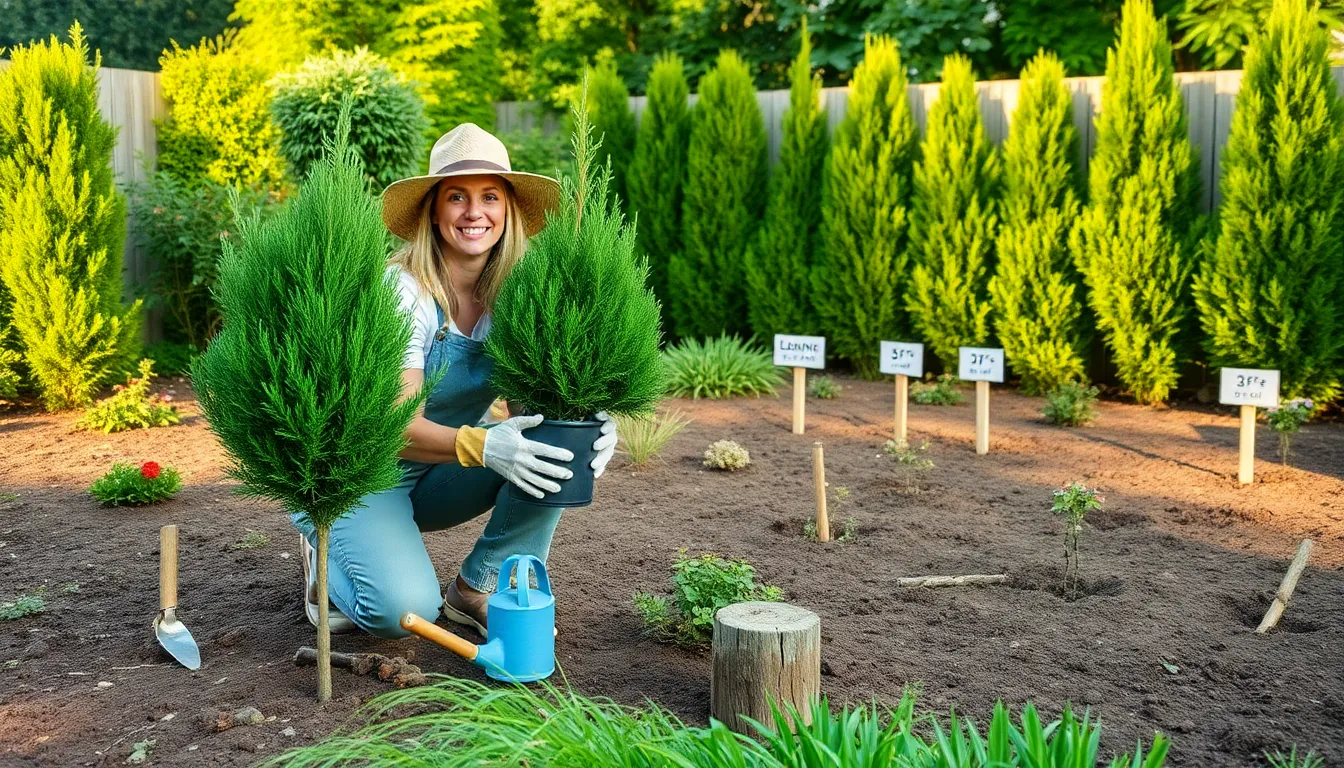Imagine stepping into your garden and being greeted by a lush, vibrant hedge that not only adds beauty but also offers the perfect sanctuary from prying eyes. Whether you’re a novice gardener discovering the joys of cultivating greenery or a seasoned horticulturist seeking to enhance your space, the journey to planting a privacy hedge is both rewarding and transformative.
For beginners, the thought of establishing a hedge might seem daunting, but fear not—this guide will break down each step into manageable parts. And for those with more experience, we’ll delve into the nuances that can refine your approach, helping you select the right plants and optimize their growth.
Privacy hedges are more than just barriers; they are living tapestries that evolve with the seasons, offering a dynamic element to your garden. In this article, you’ll learn about the factors influencing planting time, from choosing the right species to understanding soil preparation, ensuring you create a hedge that thrives for years to come.
Determining Hedge Planting Time
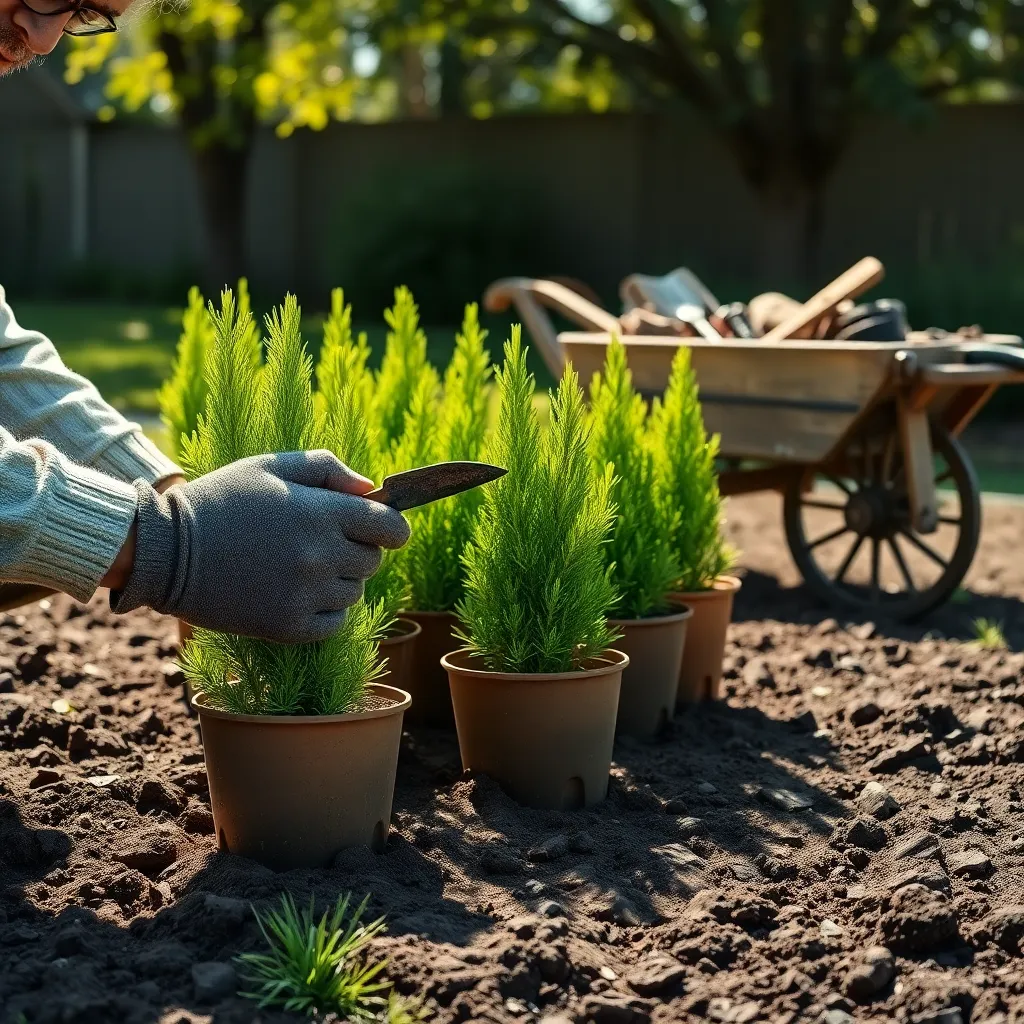
Timing is crucial when planting a hedge for privacy, as it can significantly affect the success and growth rate of your plants. Generally, the ideal time to plant a hedge is during the dormant season, which is typically in late fall or early spring, depending on your climate.
In colder regions, planting should be done in early spring when the ground is workable, ensuring that the roots establish before the hot summer months. For milder climates, late fall is a good option, allowing roots to develop in cooler, moist soil conditions before the onset of winter.
Consider the specific needs of the plants you choose, as some species have particular planting time preferences. For instance, evergreen hedges such as privet or boxwood prefer a spring planting to avoid frost damage, while deciduous options like beech or hornbeam can be planted in the fall.
While planting, ensure that the soil is well-prepared and enriched with organic matter to support root development. A mixture of compost and garden soil can enhance drainage and nutrient availability, which is essential for young plants.
Watering is critical after planting; young hedges require consistent moisture to establish strong roots. A general guideline is to water deeply once a week, adjusting for rainfall and soil type, to keep the soil evenly moist but not waterlogged.
Choosing Quick-Growing Varieties

When selecting plants for a quick-growing hedge, consider species known for their fast growth, such as Privet, Leyland Cypress, and Bamboo. These plants not only grow rapidly but also provide dense foliage, perfect for privacy.
For the best results, ensure the chosen species are well-suited to your local climate and soil conditions. Researching plant hardiness zones and cross-referencing them with your location can help avoid disappointments later.
Fast-growing hedges require specific care to reach their full potential quickly. Regular watering is essential, especially during the first few years, to encourage deep root development.
In addition to watering, fertilization plays a crucial role in promoting vigorous growth. Use a balanced, slow-release fertilizer in early spring and mid-summer to provide necessary nutrients throughout the growing season.
Pruning is another important aspect of maintaining a quick-growing hedge. Regular trimming not only encourages bushier growth but also helps maintain the hedge’s desired shape and height.
For those who are more experienced, consider implementing a mulching strategy to retain soil moisture and suppress weeds. Organic mulch, such as bark or straw, can be particularly beneficial in maintaining soil health.
Preparing Your Planting Area
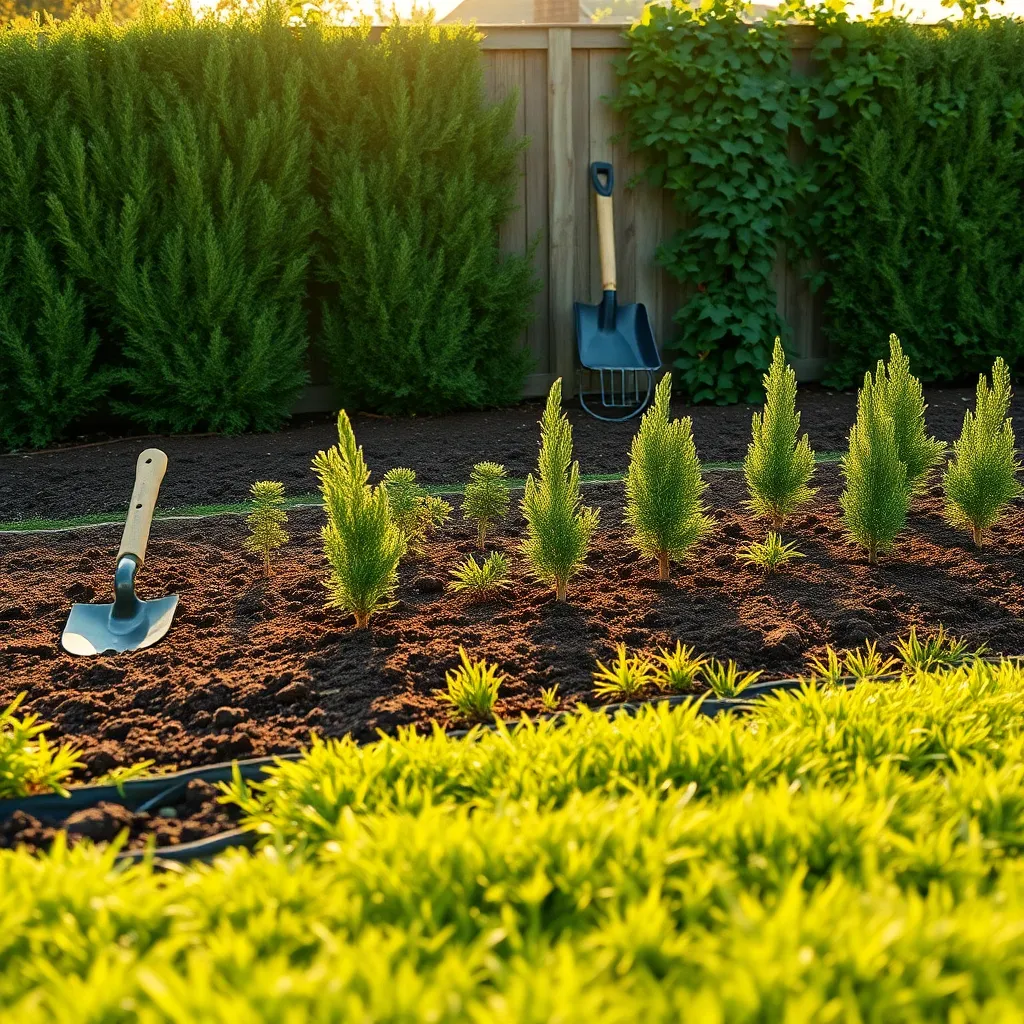
Before planting your hedge, it’s crucial to prepare the area thoroughly to ensure optimal growth. Start by clearing the site of any weeds, debris, or existing plants that could compete with your new hedge for nutrients.
Next, assess the soil quality where you plan to plant your hedge. It’s important to ensure the soil is well-draining, as most hedge plants prefer this condition to avoid root rot.
For best results, incorporate organic matter like compost or well-rotted manure to enrich the soil. This addition will improve soil structure and provide essential nutrients that promote strong plant growth.
Consider the spacing of your hedge plants, as overcrowding can hinder their development. Follow the recommended planting distances for your chosen variety, which typically ranges from 18 to 36 inches apart.
Water the site thoroughly a day before planting to maintain consistent moisture levels. This practice prepares the soil to better accommodate the new plants and helps them establish faster.
- Tip for Beginners: Use a garden tiller to break up the soil and make the job easier.
- Advanced Tip: Conduct a soil pH test and adjust as necessary to meet the specific needs of your hedge species.
Planting Techniques for Efficiency
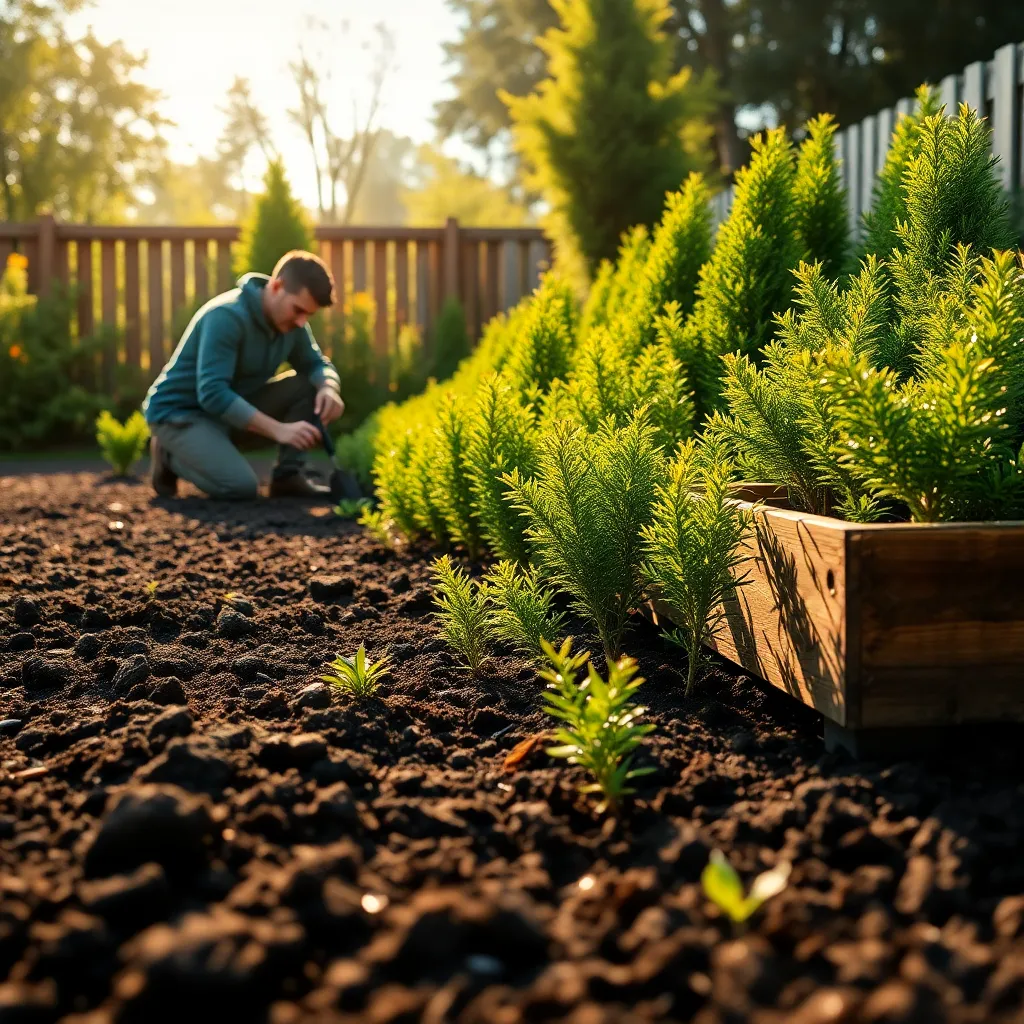
To plant a hedge efficiently, start by laying out your plants before digging any holes. This allows you to visualize the spacing and adjust as needed for a uniform look.
Next, dig holes that are twice the width of the root ball and just as deep to encourage root spread. This technique helps ensure that the plants establish quickly by providing ample space for root growth.
Consider the timing of your planting to maximize growth potential. For most hedges, planting in early spring or fall allows plants to establish before the stress of summer heat or winter cold.
Watering is another crucial step that can affect planting efficiency. Initial watering should be deep to encourage roots to grow down rather than staying near the surface.
For those with rocky or clay-heavy soil, amending the soil with organic matter, such as compost, can improve drainage and nutrient availability. This adjustment helps plants grow more vigorously, reducing the time it takes to establish a dense hedge.
Mulching around the base of each plant can significantly enhance efficiency by conserving moisture and suppressing weeds. Use an organic mulch like bark or wood chips, applying it in a 2-3 inch layer.
Finally, consider using a drip irrigation system to maintain consistent moisture levels without overwatering. Automated systems can save time and ensure each plant receives adequate water, particularly during the establishment phase.
Expected Growth and Maintenance
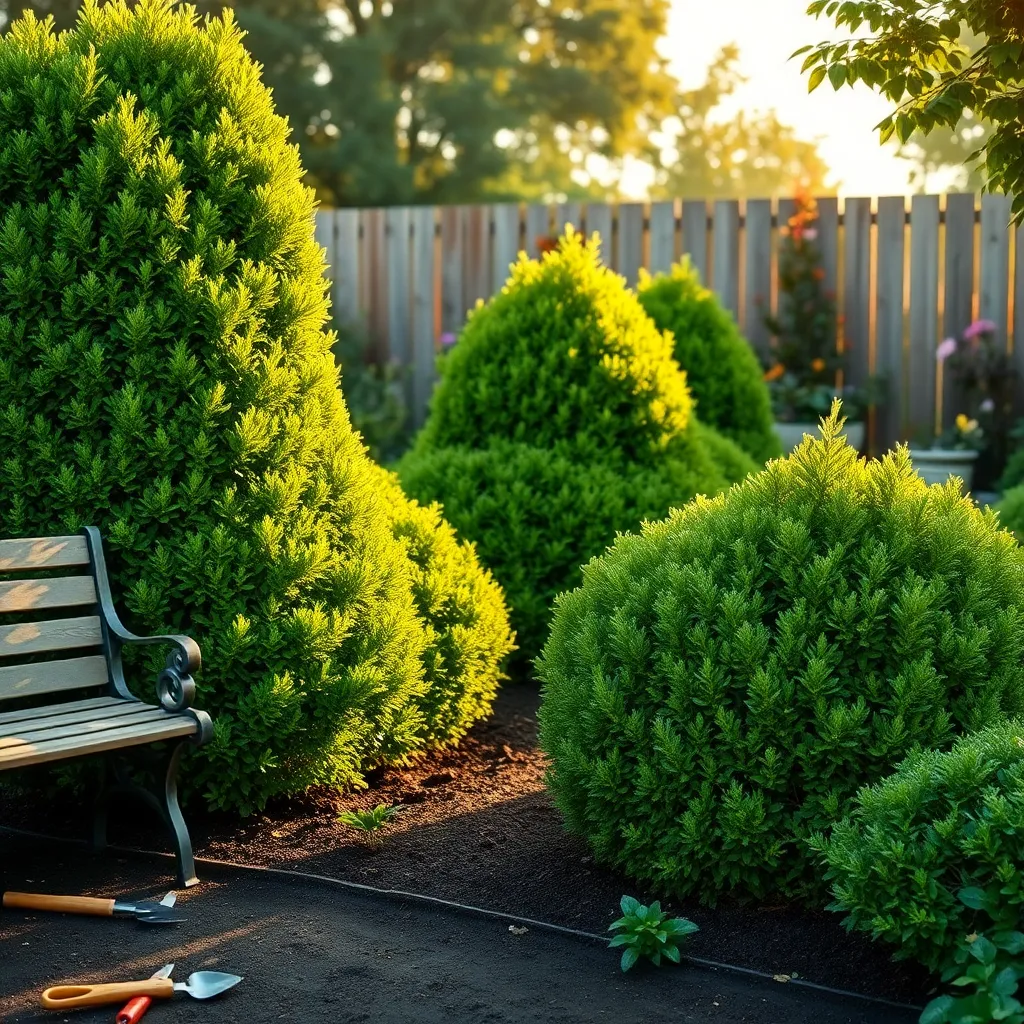
When establishing a privacy hedge, understanding the expected growth rate of your chosen plants is crucial. Most hedging plants, such as Leyland cypress or privet, can grow between 1 to 3 feet per year under optimal conditions, making them ideal for quick privacy solutions.
To ensure healthy growth, it’s important to select the right soil type for your plants. Most hedges prefer well-draining soil, rich in organic matter, which can be improved by adding compost or aged manure before planting.
Regular maintenance is essential to keep your hedge lush and dense. Water newly planted hedges deeply once a week, especially during dry spells, and taper this as they become established, allowing the top inch of soil to dry out between waterings.
Pruning is another key aspect of hedge maintenance, encouraging bushier growth and maintaining the desired shape. For most species, begin pruning in the plant’s second year, cutting back by about one-third in early spring to promote vigorous growth.
- Tip for Beginners: Start with hardy, fast-growing species like privet or boxwood, which are more forgiving and easier to maintain.
- Advanced Advice: Consider using a slow-release fertilizer in early spring to boost growth and improve plant health.
Conclusion: Growing Success with These Plants
As we wrap up our exploration of how long it takes to plant a hedge for privacy, let’s reflect on the five key relationship concepts we’ve covered. First, patience plays a vital role, much like in nurturing any relationship. Second, the importance of choosing the right plants mirrors selecting the right partner or friends who support your personal growth. Third, consistent care and attention are crucial, akin to maintaining open communication. Fourth, adaptability is essential, as every relationship, like a hedge, may require adjustments to thrive. Lastly, the rewards of commitment are plentiful, providing security and a sense of achievement.
Now, it’s time to take action. Start by applying these principles to your relationships—be patient, attentive, and adaptable, ensuring they are nurtured over time. As you embark on this journey, remember to bookmark this article for quick access to these valuable insights whenever you need a reminder.
Looking ahead, know that with dedication and love, your relationships can flourish, providing the privacy and security you desire. Empowered by these concepts, you have the tools to cultivate meaningful connections that stand the test of time. Save this guide as your roadmap to relationship success, and let your journey begin today.



